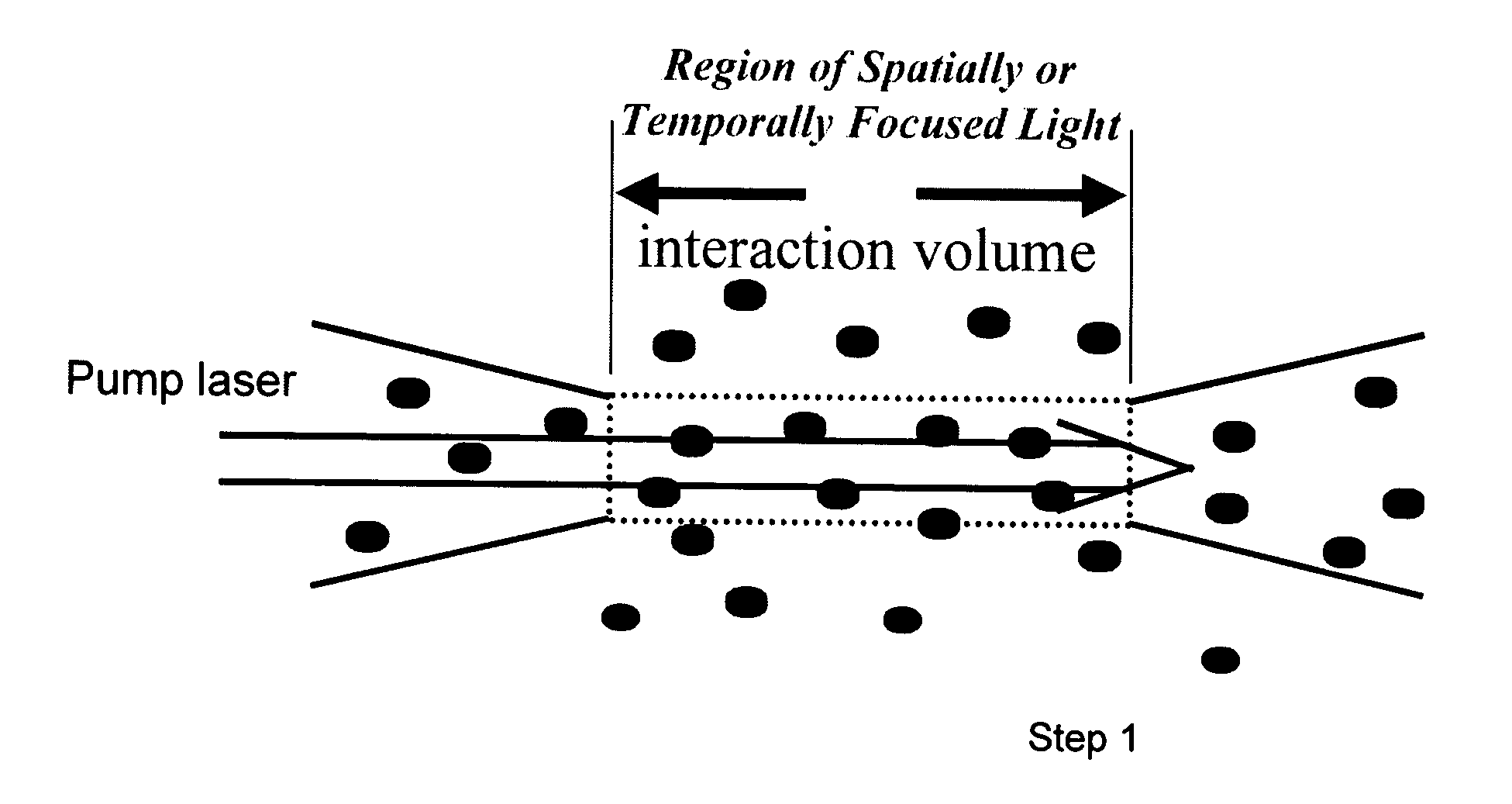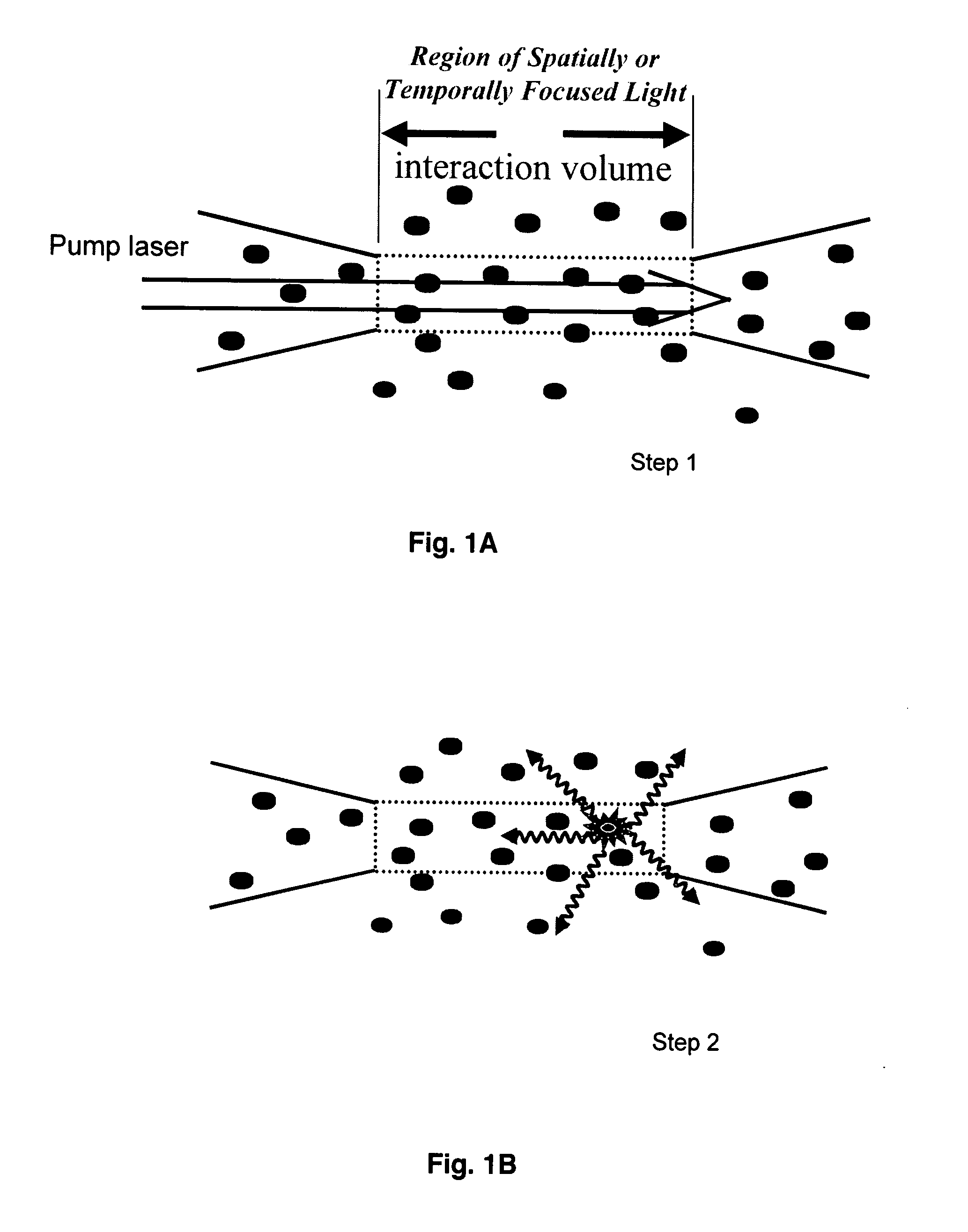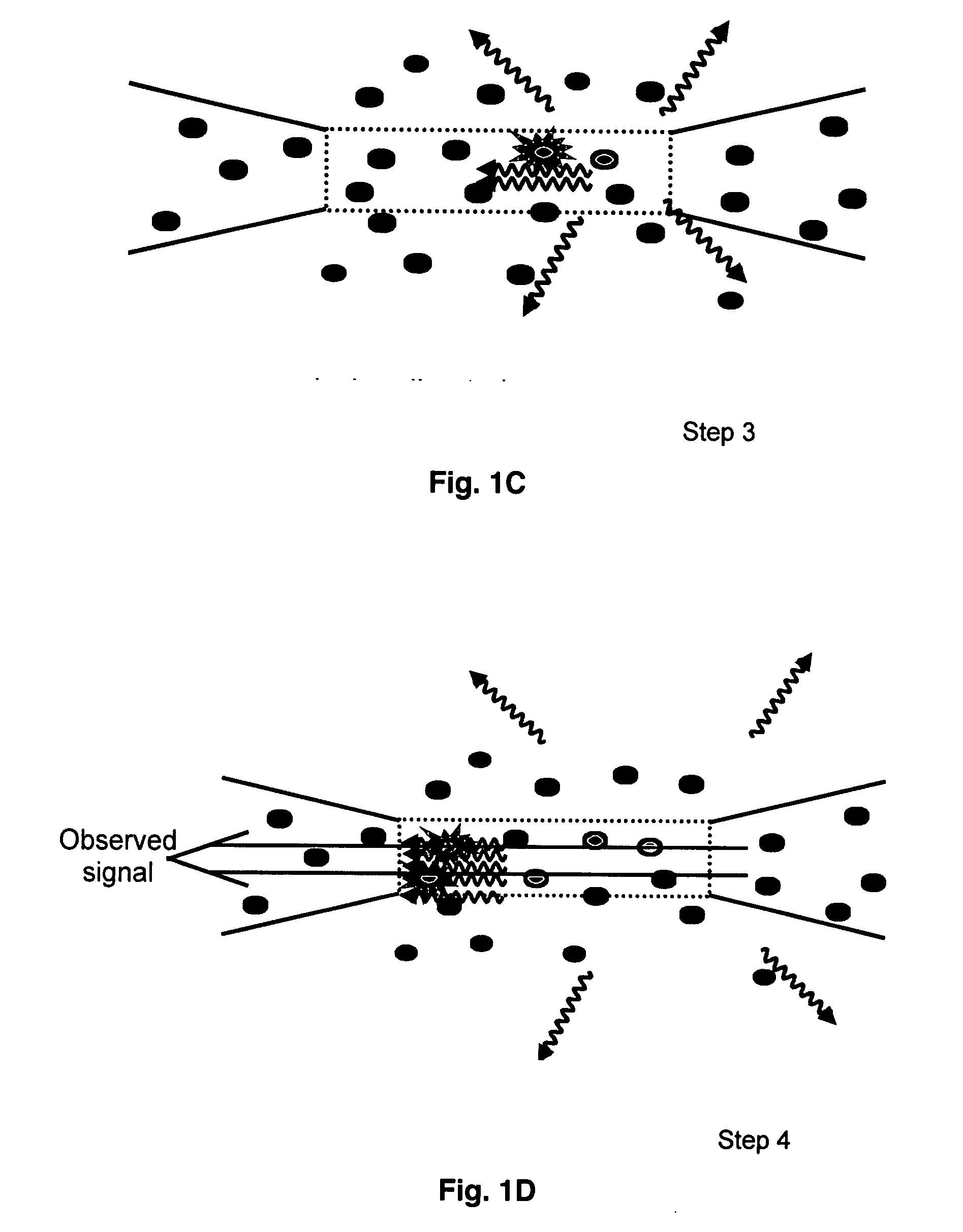Standoff detection using coherent backscattered spectroscopy
- Summary
- Abstract
- Description
- Claims
- Application Information
AI Technical Summary
Benefits of technology
Problems solved by technology
Method used
Image
Examples
example 1
Absorption Spectroscopy of Vapors
[0059]Absorption spectra of vapor samples were collected using a sealed 5 cm path-length quartz cell containing a small droplet or a few crystals of the sample material. Vapor samples for laser experiments were generated by bubbling dry nitrogen gas through pure liquids or over solid crystals of the materials of interest. Benzene, toluene and acetone spectroscopic grade solvents were purchased from Aldrich and used without further purification. Naphthalene (99%) crystals were purchased from Aldrich and used without further purification. Vapor samples were pumped into cylindrical glass tubes of different diameters and lengths, all without windows. Vapor was confined to the sample cell by the use of small vacuum inlets at the ends of the cell that were evacuated using a small laboratory vacuum pump. The outlet of the vacuum pump was directed to a custom lab ventilation system to prevent the accumulation of potentially hazardous levels of vapor in the l...
example 2
Target Organic Vapor Ground State Absorption Spectra
[0062]Ground state absorption spectra of some target organic vapors are shown in FIG. 1. Many of the materials of interest have strong resonances in the ultraviolet which are accessible with the 4th or 5th harmonic of a Q-Switch Nd:YAG laser. Producing pulse energies of 10-100 mJ for the 4th and 5th harmonic, such sources can potentially produce high excited state densities within the interaction volume and may lead to amplified and directed luminescence from the excited state materials. Even weakly luminescent materials can be detected using these laser induced fluorescence techniques.
[0063]The absorption and laser-induced fluorescence spectrum of acetone vapor is shown in FIG. 2. Acetone is known to have low quantum efficiency for luminescence, reportedly owing to its very short-lived lowest excited singlet state [24-27]. However, with the excited state densities produced by intense laser excitation (˜1025 m−3) it is possible to ...
example 3
Detection of Photo-Fragment Luminescence
[0068]The importance of pulse-width is not only limited to controlling the length of the interaction volume, it can also dictate the types of processes observable and exploited for standoff detection. For energetic materials of interest, the parent molecules themselves are very weakly luminescent and it is unlikely that luminescence from the parents can be used for any reasonable detection application. However, the photo-fragments produced from these materials can luminance quite intensely.
[0069]Photo-fragmentation followed by subsequent laser-induced fluorescence of the fragments would require two consecutive UV photons of the correct energy and delayed in time enough to capture the photo-fragment after it has dissociated far enough from the reaction center to be considered a free species. With picosecond and sub-picosecond pulses, this condition cannot be met within a single pulse envelope and would require two separate pulses delayed electr...
PUM
 Login to View More
Login to View More Abstract
Description
Claims
Application Information
 Login to View More
Login to View More - R&D
- Intellectual Property
- Life Sciences
- Materials
- Tech Scout
- Unparalleled Data Quality
- Higher Quality Content
- 60% Fewer Hallucinations
Browse by: Latest US Patents, China's latest patents, Technical Efficacy Thesaurus, Application Domain, Technology Topic, Popular Technical Reports.
© 2025 PatSnap. All rights reserved.Legal|Privacy policy|Modern Slavery Act Transparency Statement|Sitemap|About US| Contact US: help@patsnap.com



